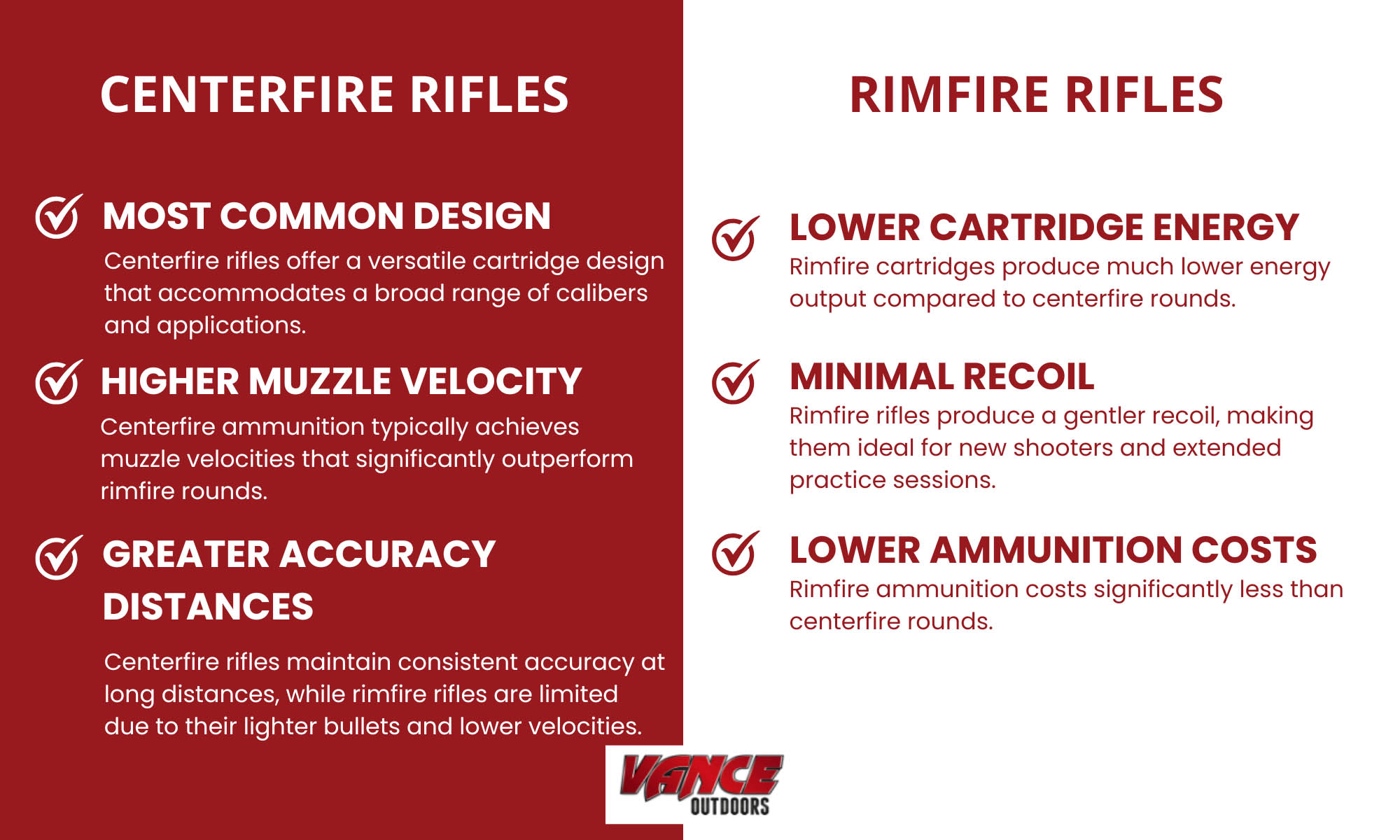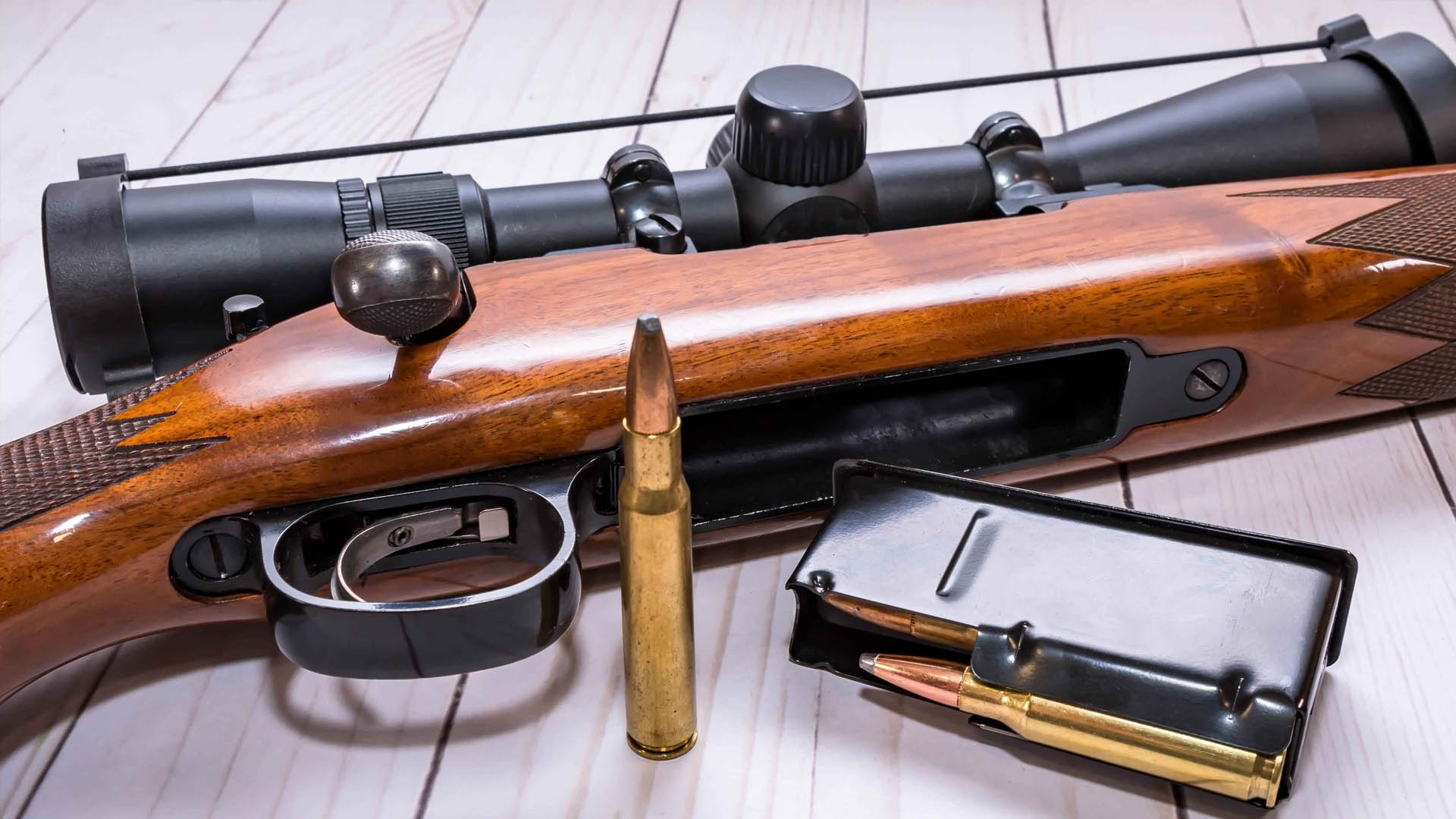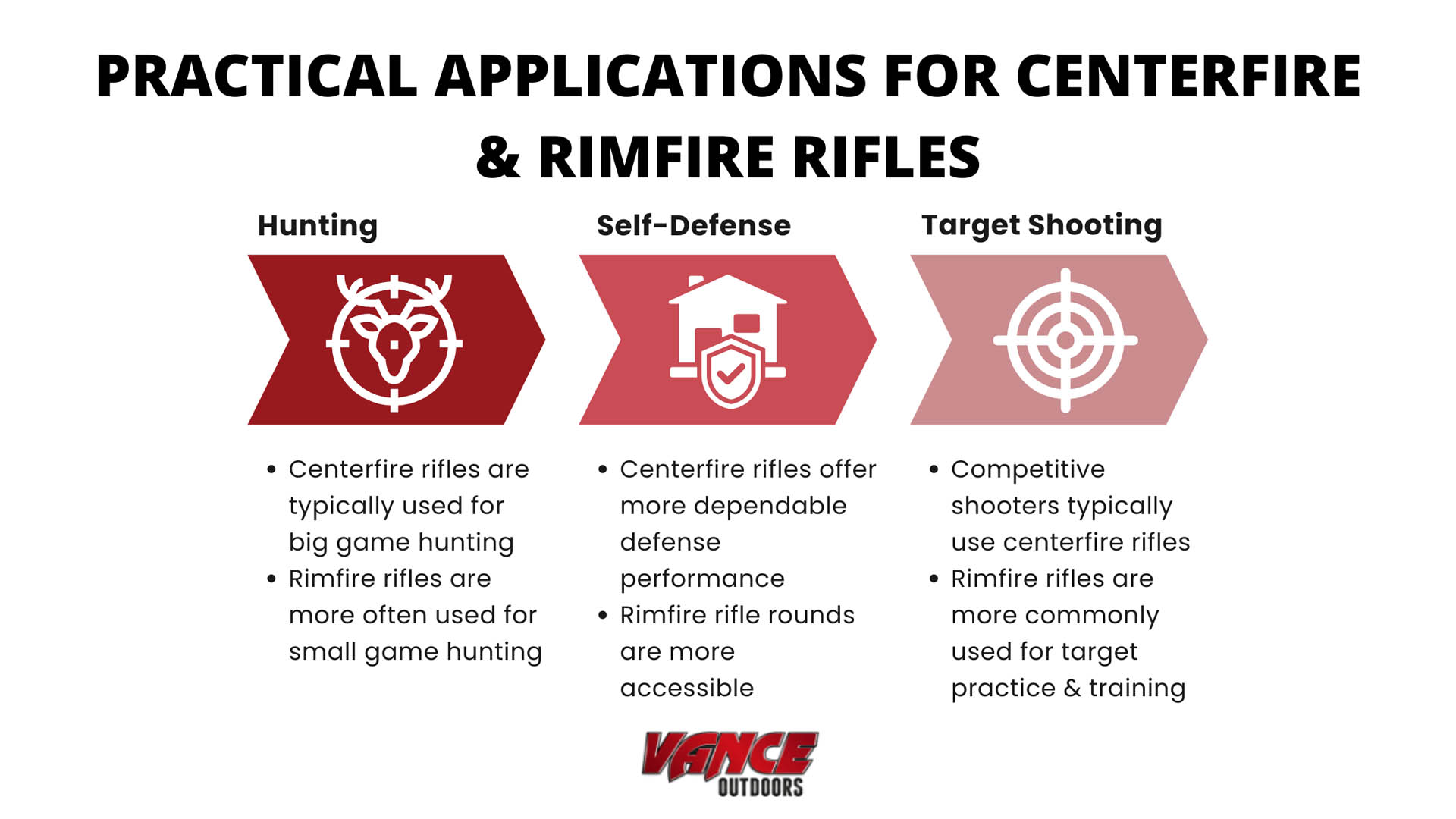The Short Answer
The primary difference between centerfire rifles and rimfire rifles is their ammunition design and firing mechanism. Centerfire rifles use ammunition with the primer in the center of the cartridge base and are preferred for larger calibers, while rimfire rifles use ammunition with the primer around the rim and are common in smaller calibers.
When choosing between a centerfire and rimfire rifle, understanding their distinct characteristics can significantly impact your shooting experience and success. These two rifle types represent fundamentally different approaches to firearm design, each with specific advantages that make them suitable for different applications. Whether you're looking to make your first firearm purchase or an experienced shooter expanding your collection, knowing the core differences between centerfire and rimfire rifles will help you make an informed decision.
This guide breaks down everything you need to know about centerfire and rimfire rifles, from their basic mechanics to practical applications. We'll explore their strengths, typical uses, and help you determine which type best suits your needs. Whether you're interested in target shooting, hunting, or home defense, you'll find clear, practical information to guide your choice.

Understanding the Basics of Rimfire vs Centerfire Rifles
Centerfire rifles use ammunition with the primer located in the center of the cartridge base, while rimfire rifles have primer compound distributed around the rim of the cartridge. This fundamental difference in design makes centerfire rifles more powerful and suitable for larger game hunting and shooting over long distances, while rimfire rifles are the better choice for small game hunting and target practice.
Centerfire rifles, which are the most common type of rifle in use today, have a primer that sits in a small pocket at the center of the cartridge base. When the firing pin strikes the centerfire primer, it ignites the powder charge inside the case. The centerfire design allows for thicker cartridge walls and higher pressure loads, making these rifles ideal for big game hunting and precision shooting.
Rimfire rifles feature a simpler, older design dating back to the 1800s. These rifles use cartridges where the primer compound fills the hollow rim around the base. When the firing pin strikes any point along this rim, it crushes the case edge and ignites the rimfire primer. Rimfire ammunition typically operates at lower pressures than centerfire rounds. The .22 Long Rifle stands as the most widely used rimfire cartridge in the United States.
These differences are most apparent when examining their ammunition. Centerfire cartridges show a distinct circular primer in the middle of the case head, while rimfire rounds have a smooth base with a slightly protruding rim. This affects not only the ammunition's power but also its reusability- centerfire cases can be reloaded multiple times, while rimfire cases cannot be reloaded due to their construction.

Performance and Power Comparison
When comparing centerfire and rimfire rifles, the performance differences become apparent across several key metrics.
Muzzle Velocities
Centerfire ammunition typically delivers significantly higher muzzle velocities, often reaching 2,700-3,000 feet per second with common hunting cartridges. In contrast, rimfire rounds generally achieve velocities between 1,200-1,750 feet per second.
Energy Transfer
Centerfire rifles generate substantial downrange energy, with common hunting loads delivering 2,000-3,000 foot-pounds of energy at the muzzle. Rimfire cartridges produce much lower energy, typically 100-150 foot-pounds with standard .22 LR loads. This makes centerfire rifles more suitable for larger game hunting and longer-range shooting.
Accuracy
Centerfire rifles maintain accuracy at significantly greater distances. Many centerfire rifles can achieve consistent accuracy at 500 yards or beyond when paired with quality optics and proper technique. Rimfire rifles, while capable of excellent precision, see their practical accuracy limit around 150-200 yards due to their lighter bullets and lower velocities.
Recoil Characteristics
Centerfire rifles, especially in larger calibers, produce noticeable recoil that can affect shooter comfort and follow-up shots. Rimfire rifles produce minimal recoil, often described as a gentle push rather than a sharp kick. This mild recoil makes rimfire rifles particularly well-suited for new shooters, training purposes, and extended practice sessions where fatigue becomes a factor.
The lower recoil of rimfire rifles also contributes to their inherent accuracy potential at shorter ranges, as shooters are less likely to develop flinching habits or poor technique due to recoil anticipation. However, centerfire rifles ultimately offer superior ballistic performance and versatility across a broader range of shooting applications.

Practical Applications and Uses
Centerfire and rimfire rifles each excel in different practical applications, with their distinct characteristics making them suited for specific uses.
Hunting
Centerfire rifles dominate big game pursuits, offering the power needed for ethical harvests of deer, elk, and bear. Their superior ballistics and energy transfer make them the standard choice for shots beyond 100 yards. In contrast, rimfire rifles shine in small game hunting, particularly for squirrels, rabbits, and other varmints where their lower recoil and reduced noise allow for precise shot placement without overly damaging meat.
Target Shooting Applications
Target shooting applications vary significantly between these platforms. Competitive shooters often select centerfire rifles for long-range precision matches, where consistent accuracy at extended distances is paramount. The inherent accuracy potential of quality centerfire ammunition makes these rifles the go-to choice for serious competition. Rimfire rifles dominate informal target practice and training scenarios, with their minimal recoil and lower ammunition costs making them perfect for developing fundamental marksmanship skills. The affordable nature of .22 LR ammunition allows shooters to practice more frequently, making rimfire rifles valuable training tools.
Self-Defense
Centerfire rifles typically offer more dependable self-defense performance. Their primer ignition system provides more reliable function across varying conditions, and centerfire ammunition maintains better shelf life. While rimfire rifles can serve in home defense roles, their limited power and occasional reliability issues make them a secondary choice compared to centerfire options. Ammunition availability favors centerfire rifles during shortages, though rimfire rounds like .22 LR remain widely accessible during normal market conditions.
The choice between centerfire and rimfire firearms comes down to your specific needs. With its minimal recoil and lower ammunition costs, rimfire rifles are a great option for new shooters, while centerfire rifles provide the power and precision needed for big game hunting and long-range shooting. Competitive shooters often maintain both types—rimfire for affordable practice and centerfire for match competitions.
Selecting the Right Rifle with Vance Outdoors
At Vance Outdoors, we can help you find the ideal rifle for your shooting goals. We stock an extensive selection of both centerfire and rimfire rifles from leading manufacturers, along with all the accessories you need, including centerfire ammo, rimfire ammo, optics, and more. Visit any of our locations in Ohio or shop online to explore our complete inventory and receive expert guidance in your rifle selection.